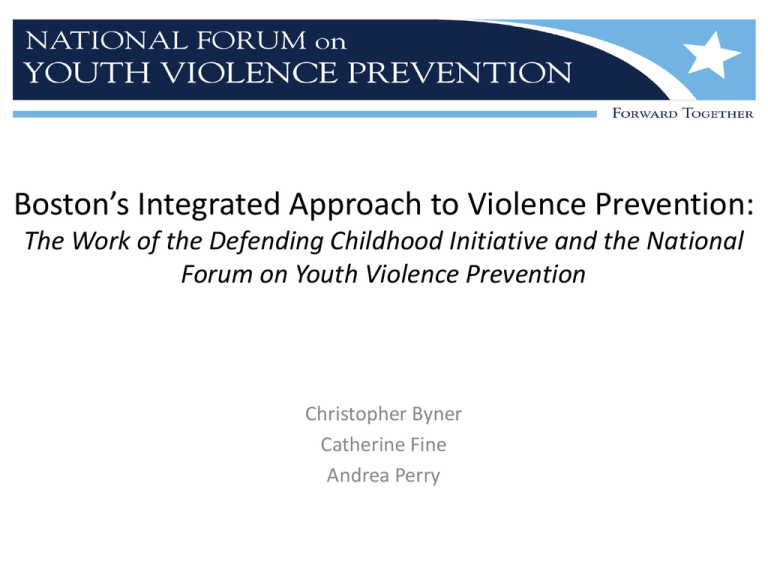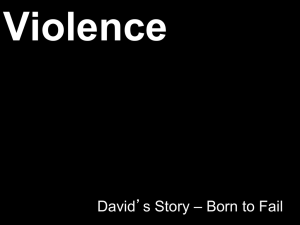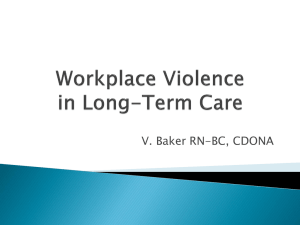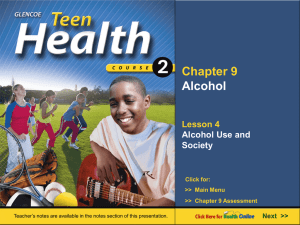Boston
advertisement

Boston’s Integrated Approach to Violence Prevention: The Work of the Defending Childhood Initiative and the National Forum on Youth Violence Prevention Christopher Byner Catherine Fine Andrea Perry Social Determinants of Health Youth Violence Prevention Funders Learning Collaborative Choice Neighborhoods Circle of Promise Boston Public Schools Mayor’s Office Colleges/ Universities Prosecutors JCS/ YOU Boston BCYF/ Streetworkers Hospitals Defending Childhood Initiative Non-Profits Boston Public Health Commission Health EOHHS -- DYS and DCF PACT Probation City of Boston’s National Forum Youth Violence Prevention Plan: Foundations Comprehensive, multi-agency, City-led three year action plan Person, place, and issue-based strategies Focused on gang and gun violence; young offenders/victims, their families and communities Enhanced information sharing and civic engagement in support of Prevention, Intervention, Enforcement and Reentry Community building and family strengthening are key components Department of Neighborhood Development Businesses Corrections Federal Youth agencies Clergy/ Faithbased Boston Police Department Community residents YouthConnect Community Policing – Safe Street Teams, Ceasefire, etc. MAIG VIP Boston Reentry Initiatives – adult and juvenile 0 AGE Early 30s STRATEGIES Early Prevention Low Prevention Intervention Level of Risk Enforcement Reentry High Principles of our Work: • • • • • • • Multi-disciplinary and reliance on partnerships Community involved Strengths-based Considers social norms Coordination and leveraging resources Developmentally appropriate Flexible Evidence based/ evidence informed • Decisions about where to focus resources and place based initiatives are data driven • “The integration of best research evidence with [practicioner] expertise and [community, client] values”(Institute of Medicine 2001 report, Crossing the Quality Chasm: A New Health System for the 21st Century) • Utilize effective methods to bridge the gap between research and practice Social Spheres Community Level Family/Adult Influencer Level Individual Level Community Level • The settings, such as schools, workplaces, and neighborhoods, in which people live, work, and play and the characteristics of these settings that are associated with exposure to violence. – Prevention – designed to impact the climate (including social norms), processes, and policies in a community – Intervention – designed to impact community-level safety Place-based Initiatives – Choice Neighborhoods – Safe Streets Teams/ Community Policing – OJJDP Grant in Mattapan – VIP/STRYVE VIP/STRYVE: Violence Prevention through Community Engagement and Mobilization Residents are a community’s primary asset Social cohesion and efficacy are protective factors Community mobilization can enhance social cohesion and efficacy Operation Ceasefire – Multi-agency, national best practice – Targeting most active gangs, in terms of gun violence – Messaging component to remove anonymity and hold them accountable for their actions • Offering services • Promising enforcement consequences – Relentless follow up on services and enforcement Youth- Driven Social Marketing Campaign • Healthy relationships and healthy masculinity messages • Feature Boston youth in campaign materials. • Youth develop the messages, manage social media and plan events. • Ongoing programming implemented by Peer Leaders. Family/Adult Influencer Level • Close relationships (peers, partners, family members) that may influence behavior or otherwise impact the likelihood of experiencing violence as a victim or perpetrator • Prevention – designed to support and educate adult influencers to provide positive modeling and messaging for young people; to provide resources and opportunities for siblings/children of those perpetrating violence • Intervention – designed to provide resources for families impacted by violence Recognize the role of adult influencers (coaches, youth workers) in communicating healthy relationship messages to youth. – Through DCI, Boston Centers for Youth and Families lead effort to train over 40 athletic directors to implement Coaching Boys to Men curriculum – Host local Y-Summit DCI identified need for increased training for frontline staff, providers, and residents to: • Increase their knowledge about the impact of violence and trauma on children • Increase skills to support to children, adolescents and families • Increase skills to promote resilience and assets in children, adolescents and families Build capacity of local agencies to implement Family Nurturing Programs – The Nurturing program is evidence based and has been adapted for different cultural groups and developmental phases. – Strengths based approach that builds nurturing relationships within and among families as well as connects to local resources. – Meets families where are they are: health centers, early care centers, housing developments, and churches Individual Level • Personal history and identity factors that impact the likelihood of becoming a victim or perpetrator of violence – Prevention strategies – designed to promote attitudes, beliefs, and behaviors that prevent violence – Intervention strategies – designed to provide resources for those exposed to/affected by violence and opportunities and/or suppression for those perpetrating violence PACT Initiative PACT is a multi-agency, person and place-based firearm violence reduction initiative that focuses on the individuals driving firearm violence in hotspot neighborhoods. The strategy aims to reduce firearm violence by: •Targeting a small but dangerous group of gang involved youth with proactive law enforcement suppression tactics, •Offering intervention and prevention services to PACT individuals and their family members, and PACT Enforcement Strategy BPD: Facilitation of creation and maintenance of PACT individuals, convening of partners, ongoing analysis and communication. Boston Police: Districts and Specialized Units use all legal levers at their disposal, from addressing misdemeanor infractions to intensive investigations. Assisted in PACT selection process. DA’s Office: Targeted fasttrack prosecution, advocating for held without bail, prioritized victim/ witness services. DYS: Enhanced supervision and Probation: prioritized Enhanced U. S. Attorney’s Suffolk County services which Office: Sheriff’s supervision may include which may Federal Department: area restrictions, adoption of Automatic include area curfews, and restrictions cases for placement in the home visits. curfews, GPS targeted Boston Reentry Caseworkers pull prosecution. monitoring, and Initiative (BRI). youth back into home visits. secure facilities for infractions to stabilize them. PACT Service Strategy Overview • PACT Clients: Education and Employment Services • PACT Sibs/Children: Case Management with focus on education and out of school time; out of school time and employment opportunities Opportunities for practice change through the PACT Initiative • Providing services to children and siblings of clients to interrupt cycle of violence • Expanding frame of service delivery from jobs to healing. • Ask “What happened to you?” • Challenge of accessing resources for multiple exposure to violence Intersection between community violence and intimate partner violence Year Total Arrests Violent Offence Arrests Domestic Violence Arrests Year 1 210 66 arrests • 31.4% of total arrests (66) 13 arrests • 6% of total arrests • 19.7% of violent offence arrests Year 2 220 62 arrests • 28.2% of total arrests (62) 8 arrests • 3.6% of total arrests • 13% of violent offence arrests Through DCI, increase capacity of behavioral health system to provide evidence based treatments to address trauma – 3 Intensive Learning Communities reaching over 90 clinicians. – Increased Services at 2 Community Health Centers. • Focus on family engagement through a family partner • Connection to a medical home and primary care • Sustainability Primary prevention through: – Promoting healthy relationships among youth through peer leadership. – Universal Social Emotional Learning Curriculums • Will reach 23 schools with the Open Circles curriculum • 7,000 students grades Kindergarten through 5th grade • Training 750 educators Develop healthy relationships now to prevention future generations’ exposure to violence. Opportunities and Next Directions • Federal partnerships benefiting local level strategies • Leveraging non-traditional funding streams









